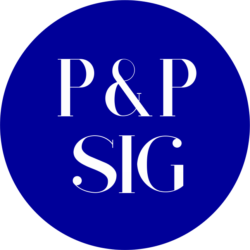Discussion Threads
This is a list of topics on the P&P SIG Discussion List.
You can read the full thread in the discussion list archives.
See the Mail Lists page for instructions.
- “A P&P inquiry for the SIG” on Standard Operating Procedures (August 2014)
- “Use of the second person – you and your” (August 2014)
- “Policy” – Alternative terms (Oct 2014)
- “Policy and Procedures Library Name” (Oct 2014)
- “SOPs vs. other Procedures” (Dec 2014)
- “Q&A on Tech Com for Aerospace” (Dec 2014)
- “Cross Post from STC Lone Writer SIG” on why people do or don’t remain STC members (Jan 2015)
- “Use of video in technical documentation” (Feb 2015)
- “Authorization of policies” (Feb 2015)
- “Good source for defining different levels of P&P?” (Feb 2015)
- “Document Type Definitions?” (April 2015)
- “What volume of information/change can someone absorb in a day?” (April 2015)
- “Use of the second person – you and your” (April 2015)
- “Tools for Policies & Procedures” (May 2015)
- “Taxonomy of documents” (May 2015)
- “Student Requesting Examples of Process Documentation” (June 2015)
- “Policies or related materials on transgender topics” (Junly 2015)
- “Reference Style in Policies?” (Aug 2015)
- “Policy and Procedure Repositories” (Sept 2015)
Writing Procedures
Intercom-November 2005; By Deborah K. Lockwood; Summary by Maria Christophel (2006)
This article provides basic instructions to technical communicators for developing policies and procedures from scratch. It provides definitions and examples for the terms policy and procedure. It presents techniques for establishing a clear writing roadmap such as using flowcharts or diagrams. Defines Playscript format and details how this format is used for writing procedures. Provides suggestions for establishing style guidelines, choosing numbering sequences, and organizing the procedures.
Building an Electronic Documentation Repository
Intercom-April 2005; By Barbara Block; Summary by Maria Christophel (2006)
This article presents a model for creating a documentation database that provides easy access to its users and a self marketing tool for the technical writer. It describes the three reasons for building a repository: building a showcase for the work produced, developing creative talent, and providing easy access of procedures for its users. The article provides insight as to the major milestones for building the repository: creating the database, designing the front end, and linking the database to the front end.
Information Gathering for Policies and Procedures
Proceedings-1996; By Christine Dodwell; Summary by Maria Christophel (2006)
This article provides a view of the various methods for collecting, using, and maintaining policies and procedures information. It defines internal sources, external sources, and publications as places to begin research. It explains the steps for collecting the information as interviewing, researching, outlining, detailing, and following up. It presents the need for maintaining files of the research and documentation process.
Writing Clear Policies and Procedures with Playscript
Proceedings-1999-J. Richard Flemming CMC; Summary by Maria Christophel (2006)
This article presents Playscript as a documentation technique, and addresses the most important benefits of using this technique for writing policies and procedures. It defines “Performance Orientation,” and details a method for using action writing. It establishes the need for structured writing as a complementing format to the Playscript technique to achieve clarity; and provides examples for using structured writing.
Transforming Tribal Knowledge into Written Instructions
Intercom-April 2006; By Bradford R. Connaster; Summary by Maria Christophel (2006)
This article presents Sequence as software, which a technical writer may use to convert Tribal Knowledge into written procedures in a few days; it defines the industry term Tribal Knowledge and explains the reasons why businesses should convert this knowledge into written documentation. The article lists and explains the mechanical and writing skills required to convert Tribal Knowledge into written procedures; it also advices on a set of requirements to set up a project using software and photography equipment to document procedures. The author details the equipment set up and provides a lot of insight into the features of Sequence including some of its pitfalls.
The Team Approach to Writing Policies and Procedures
Proceedings-1996; By Diane L. Whitmer; Summary by Maria Christophel (2006)
This article provides a brief insight of the benefits inherent in using the team approach for writing policies and procedures. The article provides a method for structuring the documentation teams, for planning the writing, and for developing the documentation. The article describes team consensus, sense of ownership, stronger writing skills, and sense of hard-earned accomplishment as benefits of using the team approach.
Techniques for Successful SME Interviews
Intercom-March 2000; By Jennifer L. Lambe; Summary by Maria Christophel (2006)
This article acknowledges the various techniques for gathering information, but it provides techniques for conducting successful interview with subject matter experts (SMEs). The article notes that SMEs may have various degrees of communication skills and therefore, it is the writer’s (interviewer’s) job to get prepared to optimize the results of the interview. It provides steps that should be taken prior, during, and after the interview. The steps prior to the interview include defining objectives, preparing for the meeting, and being punctual. The steps for during the interview include using active listening skills, asking open-ended questions, politely controlling the interview, repeating information to ensure understanding, identifying gaps, being accurate, organizing the information, and making no promises. The steps for closing the interview include thanking the SMEs, asking permission to follow up, reviewing notes immediately after the interview.
Flowcharting Processes and Procedures
Proceedings-1994; Raymond E. Urgo; Summary by Maria Christophel (2006)
This article is a brief summary of the discussion presented at the STC Conference. It introduces Flowcharting as a tool, which technical writers may use for communicating processes and procedures. This article notes the difference between a process and a procedure, and it defines the appropriateness of flowcharting for either. It mentions interrelation of processes, the source of flowcharting symbols, and the techniques of flowcharting design.
